The Mobile CPU Core-Count Debate: Analyzing The Real World
by Andrei Frumusanu on September 1, 2015 8:00 AM EST- Posted in
- Smartphones
- CPUs
- Mobile
- SoCs
Hangouts Launch
The duration of the test this time is only 3.6 seconds. During the initial application launch, we don't see much activity on the little cores. Cores 1-3 are mostly power-gated and we see that there's little to no threads placed onto the cluster during that period. Once the app opened, we see the threads migrate back onto the little cluster. Here we see full use of all 4 CPU cores as each core has threads placed on it doing activity.
This is the perfect burst-scenario for the big cores. The application launch kicks in the cores into high gear as they reach the full 2.1GHz of the SoC. We see that all 4 cores are doing work and have thread placed on them. Because of the fine granularity of the load, we see the CPUs rarely enter the power-gating state in this burst period as the CPU Idle governor prefers the shallower WFI clock-gating state. As a reminder, on the Exynos 7420 this state is setup for target residency times of 500µS.
In general, the workload is optimized towards 4-core CPUs. Because 4x4 big.LITTLE SoCs in a sense can be seen as 4-core designs, we don't see an issue here. On the other hand, symmetric 8-core designs here would see very little benefit from the additional cores.


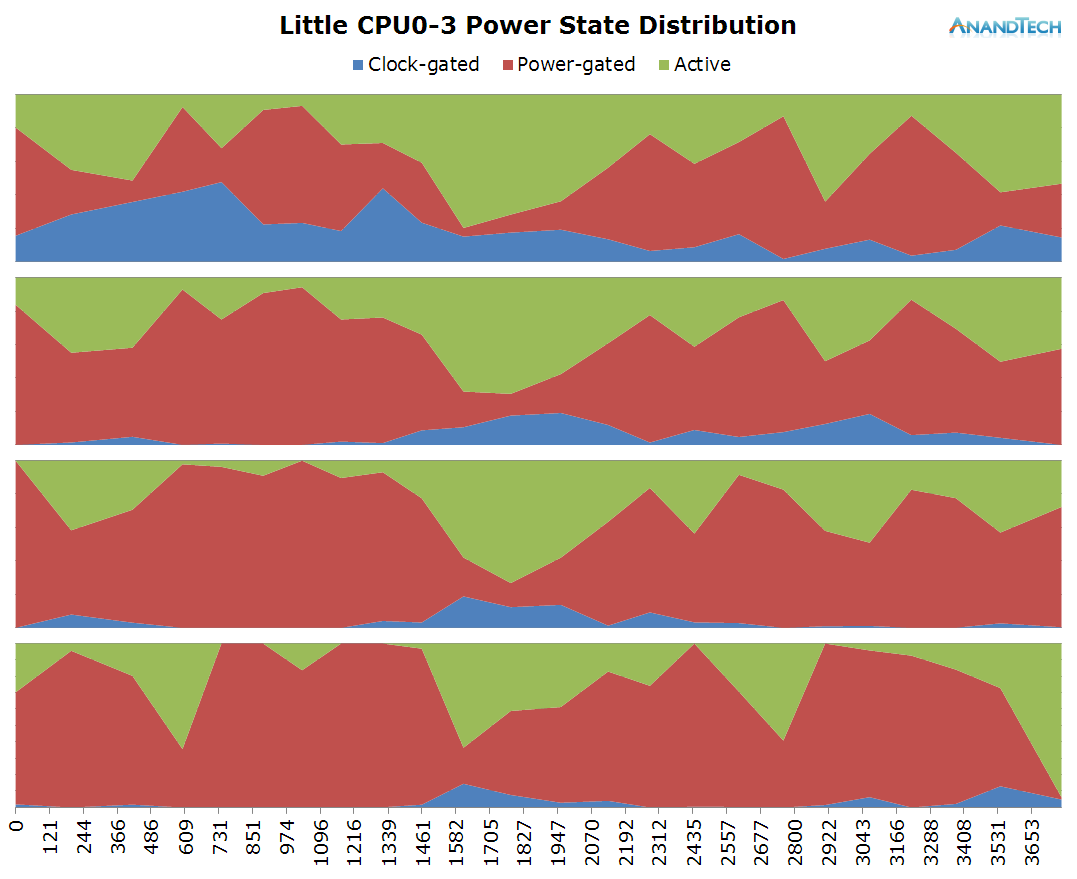

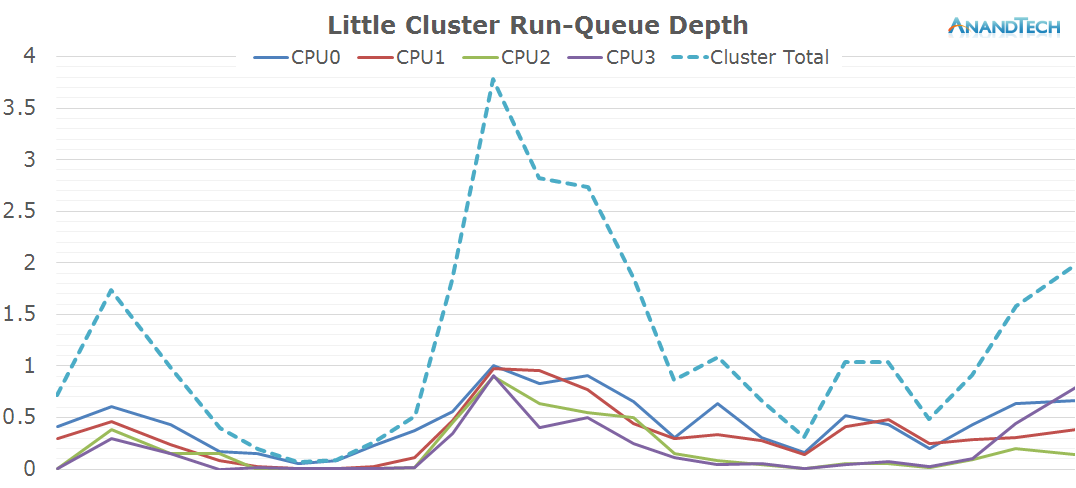
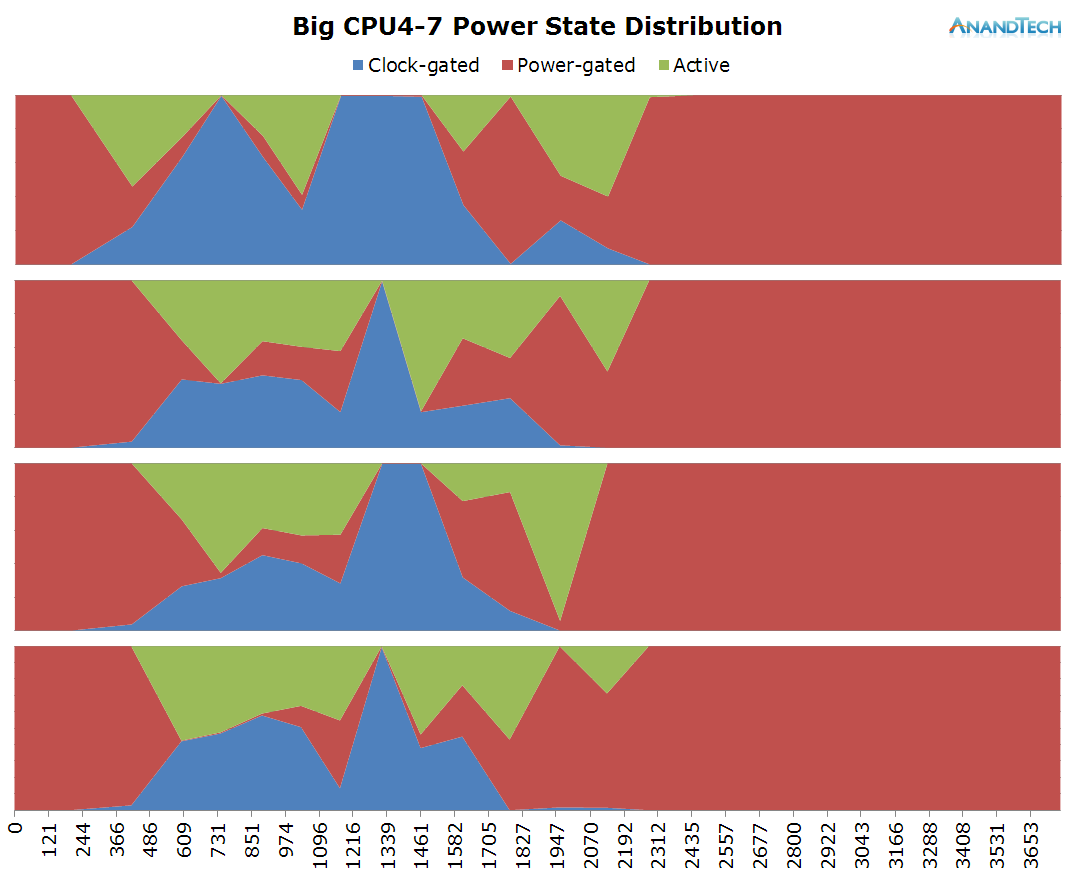
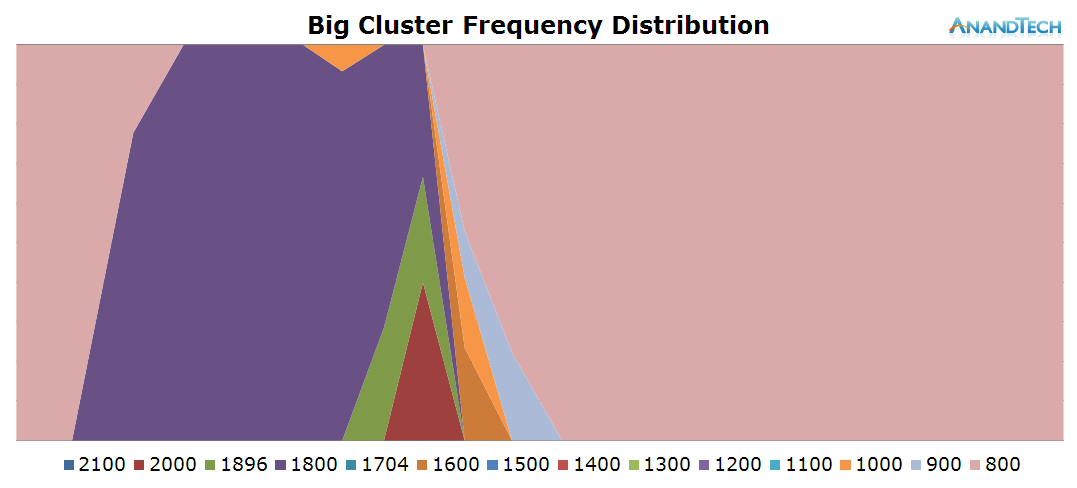
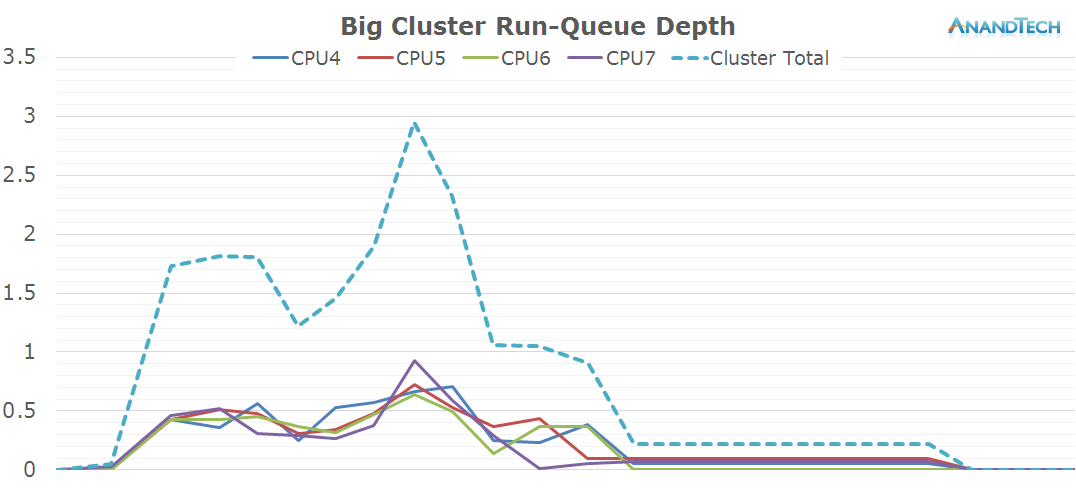
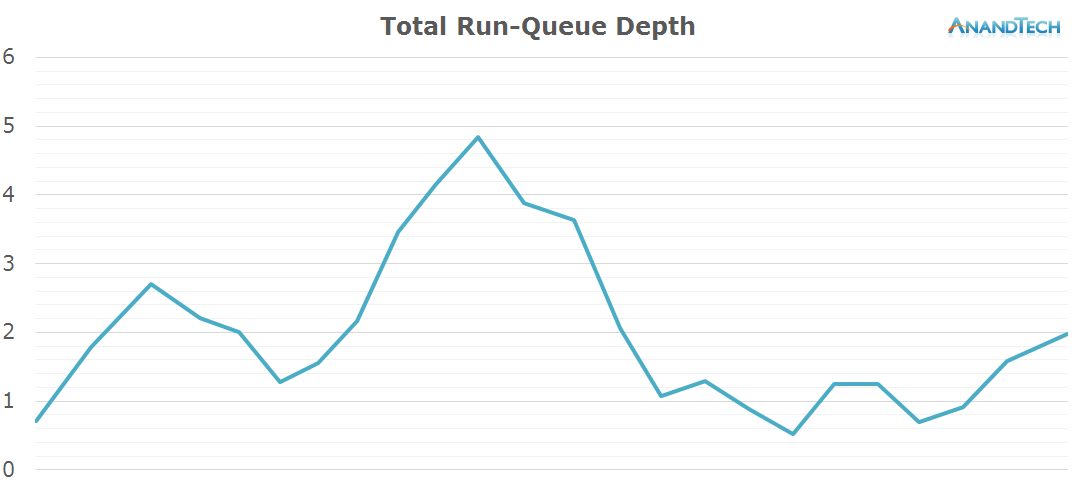








157 Comments
View All Comments
toyotabedzrock - Wednesday, September 2, 2015 - link
This article author is partly color blind, reading the hangout app launch section makes it obvious he can't see the color difference of 1800 and 2100.LiverpoolFC5903 - Wednesday, September 2, 2015 - link
Great piece from AT as usual. Very interesting to say the least.I remember reading another good piece about multiple core usage in Android in one of the android themed websites (Androidcentral?). It was a much simpler analysis and the premise was to debunk the myth that more cores are pointless at best and counter productive at worst.
The conclusion from the tests were unequivocal. Android DOES make use of multiple cores, both via multi threaded programs and discrete system tasks. So core count DOES matter, at least to an extent.
name99 - Wednesday, September 2, 2015 - link
No-one is denying that "Android can make use of multiple cores".What they are denying (for this article and similar) is that the core are
- a useful way to save power OR
- a way to make the phone feel/behave faster
This article, you will notice, does not answer either of those issues. It doesn't touch power, and there've been plenty of comments about above (by myself and others) why what is being shown here has no relevance to the issue of performance.
Do you really want to insist on claiming that articles prove what they manifestly do not, and insist on ignore the (well-explained) concerns of engineering-minded people about the sorts of tests that ARE necessary to answer these questions? Wouldn't you rather be on the side of the engineers trying to understand these issues properly, than on the side of the fanboys, uninterested in the truth as long as you can shout your tribal slogans?
darkich - Friday, September 4, 2015 - link
You make no sense.Ever heard of the benchmarks?
If all cores are used (which this article proves as a fact), and if the benchmark shows the chip scoring higher than the chip with less cores - then yes, more cores means better performance.
It is a matter of that simple logic.
And the whole massive myth that this analysis dispelled was exactly the following - more cores is an useless gimmick BECAUSE ANDROID APPS CANNOT make use of them
Hannibal80 - Wednesday, September 2, 2015 - link
Wonderful articleBillBear - Wednesday, September 2, 2015 - link
Absolutely fascinating stuff. I was seriously not expecting to see Mediatek's ultra high core count strategy vindicated by real world measurements. That's the great thing about taking measurements instead of just speculating.As a follow up, it would be fascinating to see how selectively disabling different number of cores effects timed tests.
For instance, select an extremely CPU heavy web site like Forbes and see if allowing half as many cores makes rendering the home page take twice as long.
serendip - Wednesday, September 2, 2015 - link
Excellent article as usual by Andrei. As an owner of a phone with the MT6592 Mediatek 8-core A7 chip, I was also skeptical about the point of having so many small cores. I only got the phone because it was cheap :) I've seen all 8 cores spike to max frequency when loading complex web pages or playing games. For common tasks, only 2 or 4 cores are used. I've also found that down clocking it doesn't slow things down much and yields longer battery life; modifying the single core upfreq and additional core activation thresholds could be key to optimizing these chips to one's usual workload.Notmyusualid - Friday, August 26, 2016 - link
Good comment - I've been pondering this all morning, hence why I'm back on this article. Looking at an A9 Pro right here, 4.4 configuration.It seems that the low cores have a min freq of 400MHz, which I find interesting, as they seem to sit a 691MHz most of the time. Two of the big four sit in sleep, with the other two at 833MHz.
I wonder how adjustment to the larger cores may improve battery life.
krumme - Thursday, September 3, 2015 - link
Absolutely brilliant article that moved my pre undertanding.zodiacfml - Thursday, September 3, 2015 - link
Anandtech does it again. You are my entertainment and knowledge at the same time.My thoughts: Quite not surprising after seeing some benchmarks of some SoCs in one or two years since. I think the question here is performance versus more cores. More but smaller cores are best for efficiency and probably better marketing. The only problem with these smaller cores is performance which is why we often see them on cheaper devices and doesn't feel as fast. We still need more frequency for some big things and I believe a fast dual core will answer that. So, I can't wait to see the X20.